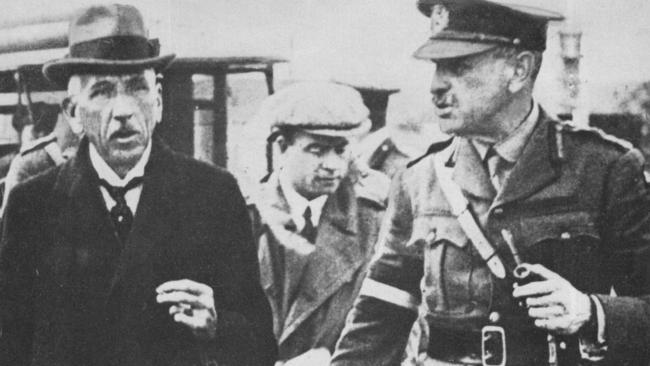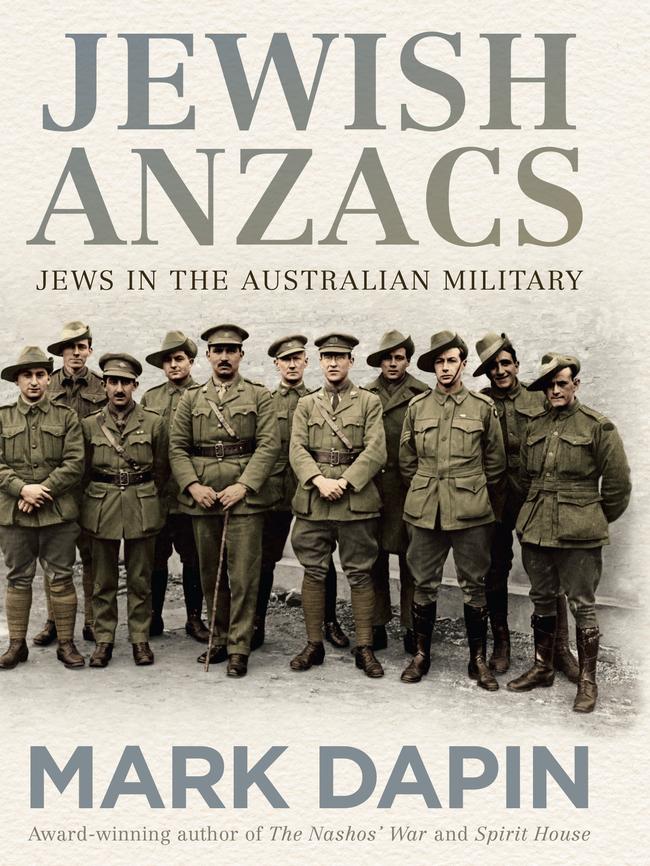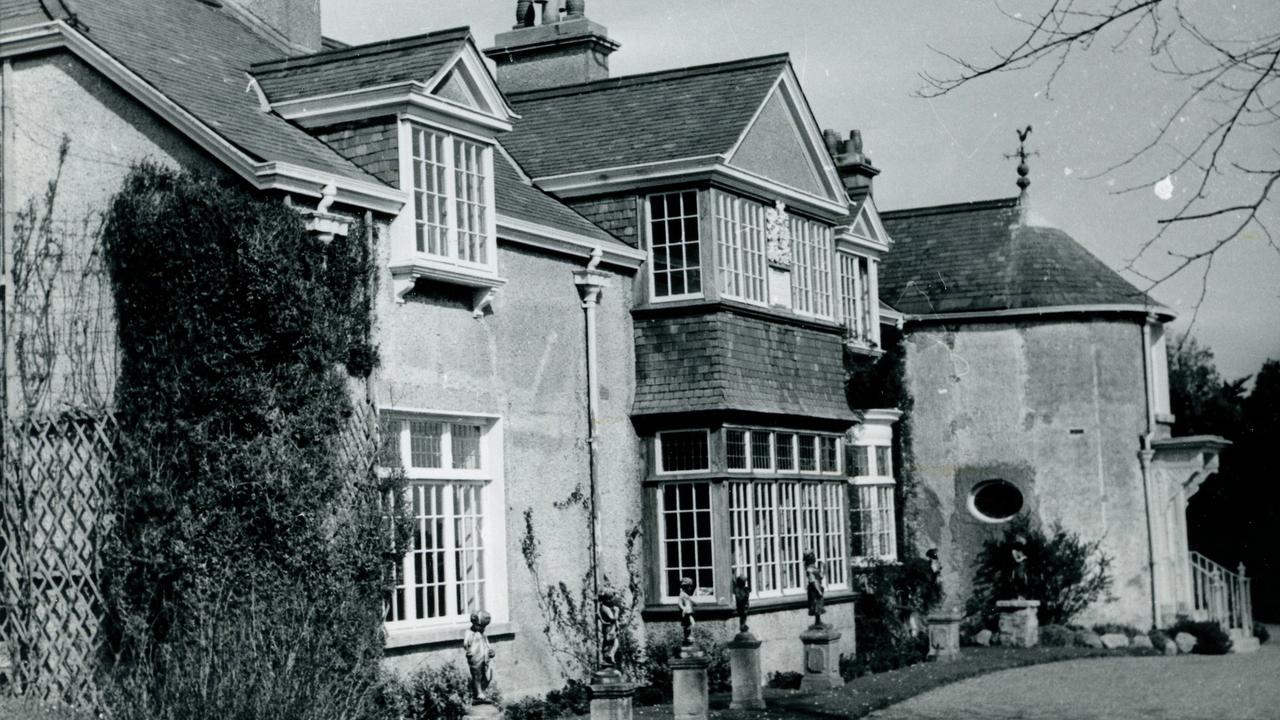Australian war history enriched by Mark Dapin’s book on Jewish Anzacs
Who knew about 7000 Jews from Australia’s small Jewish community served in the military?

It sounds like a Yiddish joke. Who knew about 7000 Jews from Australia’s small Jewish community served in the military? Smashing some stereotypes, Mark Dapin’s Jewish Anzacs is no joke but a serious, well-researched book full of poignant stories that contribute to Australian history.
Dapin is perhaps best known for his quirky weekend magazine columns. That wry sense of humour apparently comes from his Yiddish-speaking grandfather and was inherent in the language of European Jews. Dapin’s grandfather served in the military and inspired his 2011 novel, Spirit House. Jewish Anzacs is his sixth work, fiction and nonfiction, on military subjects. His familiar wit makes this solemn book an unexpected pleasure to read.
The book opens with Dapin’s interview of the father of Gregory Sher, the last Jewish Australian soldier killed in action, in Afghanistan in 2009. This moving prologue signals a focus on the human experience of war.
The book is thereafter a chronological account of the experience of Jewish Australian servicemen and servicewomen, beginning before Federation and extending to the present. Dapin uses remarkable unpublished diaries and letters to develop the historical story. Later chapters based on interviews are equally compelling. He weaves together the Jewish context, individual experiences and military events.

Dapin connects a surge in Jews’ military participation at the end of the 19th century with the relatively low incidence of anti-Semitism in Australia, Australian Jews’ British allegiance and desire to “prove themselves worthy of the empire that had granted them equal rights wherever English was spoken”. Australia at the time was a progressive and optimistic culture that afforded Jews all the rights of full citizenship denied to them almost everywhere else.
At Gallipoli, the experiences of Jewish Australians include the commanders, such as valiant Lieutenant Colonel Eliazar Margolin and triumphant General John Monash. “We have got our battle procedure now thoroughly well organised,” said Monash, going on to describe the scene in detail. The Australian-born Jew rose to become the beloved commander of the Australian Corps. Dapin recognises Monash’s aspirations as those of an outsider.
We also feel the lived experience of the trenches through the eyes of the muddied and bloodied lower ranks. Like other Anzacs, the Jews came from all strata of society. The pre-war occupations of some of those who died in France included jockey, sign writer, cigar-maker, ship’s steward.
Using the lens of Jewish experience gives us a somewhat unusual perspective of familiar characters such as CWE Bean and “Pompey” Elliott, providing a nicely rounded view to counter puffery and prejudice.
Dapin shows there was sometimes a potent, certainly different, significance to events for Jews. These moments include times when soldiers stationed in Egypt and Palestine during both world wars observed religious ritual near the setting of their biblical stories; concerns about Jew fighting against Jew in belligerent armies; the impact of deaths on the future small diaspora communities; the internment of Jews as enemy aliens in Australia during World War II; the hoary old chestnut about dual loyalties; Jews motivated to fight Nazis because the lives of their family and coreligionists were at stake; the assault on Beersheva, which lead to the Balfour Declaration supporting the establishment of the State of Israel.
The temples of Jerusalem, the pyramids of Gaza, the souks, mosques and deserts became postcard memories for a new generation of Australian servicemen, who had returned to the lands where their fathers had fought more than 20 years before. For Jewish Australian soldiers, sailors, airmen and nurses, the roots ran deeper and the memories stretched further.
This is also a social history of war and the carnage is placed appropriately into the context of Australian life. Conscription, women’s suffrage and community life are integrated into the story. We hear of the adventurous Madge Keysor, sister of VC winner Leonard Keysor, who was a conscription activist. Dapin notes that women who served left fewer records than the men and are less easily represented. There are wonderful stories about women who served in all conflicts, nonetheless.
Included in this volume are revised lists of Jews who served, prepared by Russell Stern of the Australian Jewish Historical Society, and that build on contemporary memorial rolls. It has been notoriously difficult and political to define Jewish involvement. Some Jews did not nominate their religion when they enlisted. Others declared they were Jewish when they were not. (Apparently this was done for a laugh and additional holidays.) This latest research is a valuable refinement that, importantly in the Australian context, takes account of Jews who identified as Jewish through the non-maternal line.
On the eve of World War II Geoffrey Kaye wrote to his sister, “There is in our family a certain tradition of giving service when it is required.”
On Anzac Day 2015 Josh Fink, a serving member of the military, addressed a school assembly in Melbourne. “We go abroad to face this … so that you can attend a Jewish school, you can live your life and be free from fear.” Jews since the First Fleet convicts have known Australian law protects Jews in ways still not available elsewhere and worth fighting for.
The strong archival material published here for the first time makes the book of interest to social historians and military scholars, of all creeds. The poignant and lively first-person material reveals the commitment and capacity of all veterans. The voices here are Jewish and their stories are layered with observations about faith and community, but essentially these are great stories of Australian history very well told.
Deborah Rechter is a curator of social history exhibitions, including True Jews and Patriots: Australian Jews and World War One at the Jewish Museum of Australia.
Jewish Anzacs: Jews in the Australian Military
By Mark Dapin
NewSouth, 435pp, $39.99 (HB)


